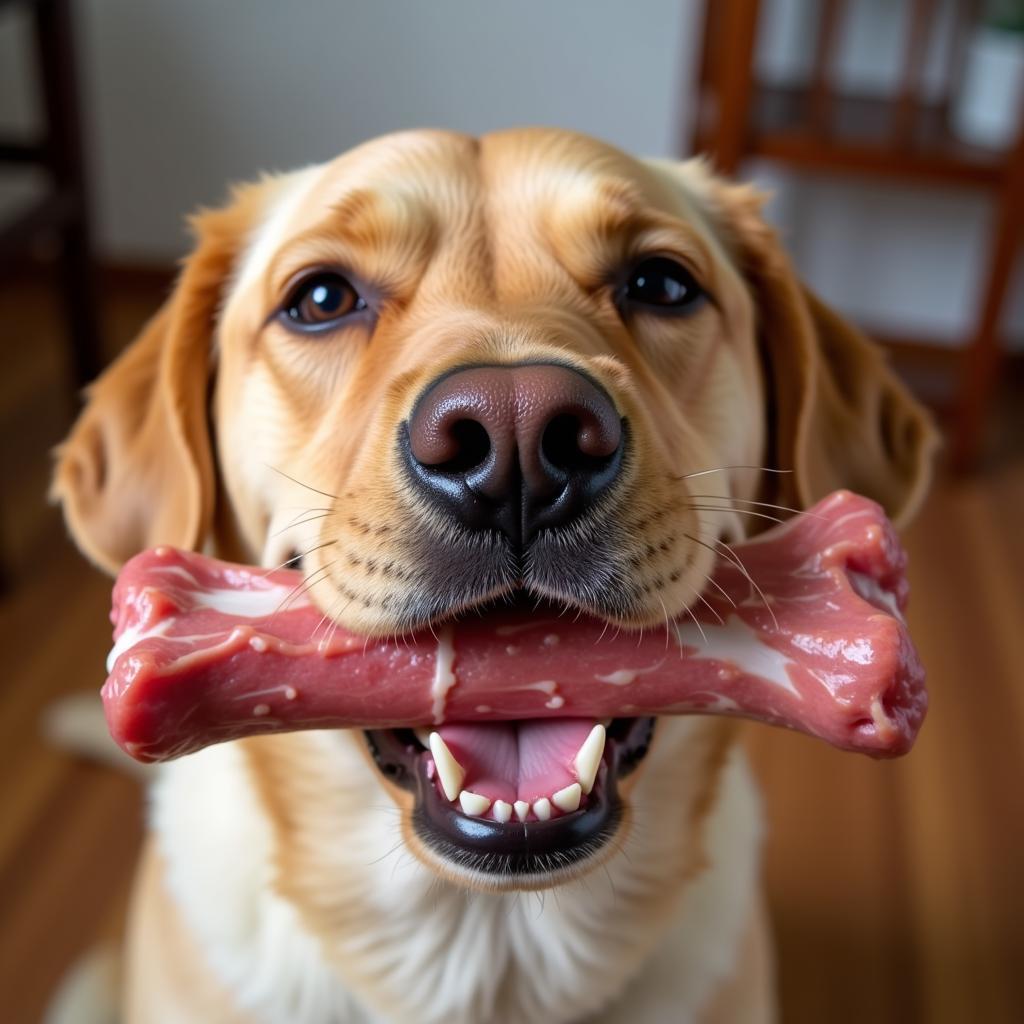Raw pet food has taken the pet nutrition world by storm, with many pet owners praising its potential health benefits. But what exactly is raw feeding, and is it the right choice for your furry friend? This comprehensive guide dives deep into the world of raw pet food, exploring its advantages, potential risks, and everything you need to know to make an informed decision for your beloved companion.
What is Raw Pet Food?
Unlike conventional kibble or canned food, raw pet food consists of uncooked, unprocessed ingredients, mimicking the diet of your pet’s ancestors in the wild. This diet typically includes:
- Muscle meat, such as beef, chicken, fish, or lamb
- Bones, either whole or ground
- Organs, like liver, kidneys, and heart
- Fruits and vegetables, usually pureed or finely chopped
The idea behind raw feeding is to provide pets with a more natural and biologically appropriate diet closer to what they would eat in their natural environment.
The Potential Benefits of a Raw Diet for Pets
Advocates of raw pet food point to a range of potential benefits, including:
- Improved Digestion: Raw food is often easier for pets to digest than processed kibble, leading to better nutrient absorption and firmer stools.
- Shinier Coat and Healthier Skin: The higher moisture content and natural oils in raw food can contribute to a healthier, glossier coat and reduce skin issues.
- Increased Energy Levels: Many pet owners report increased energy and vitality in their pets after switching to a raw diet.
- Dental Health: Chewing on raw meaty bones can help scrape plaque and tartar buildup, promoting healthier teeth and gums.
 A Happy Dog Enjoying a Raw Bone
A Happy Dog Enjoying a Raw Bone
Potential Risks and Considerations
While raw feeding offers potential benefits, it’s crucial to be aware of the potential risks:
- Bacterial Contamination: Raw meat can harbor harmful bacteria like Salmonella and E. coli, posing a risk to both pets and humans handling the food.
- Nutritional Deficiencies: Formulating a balanced raw diet requires careful planning and knowledge. Improperly balanced meals can lead to nutritional deficiencies over time.
- Cost: Raw feeding can be more expensive than traditional pet food options, especially if you’re buying pre-made meals.
- Choking Hazards: Bones, especially cooked bones, can splinter and pose a choking hazard. Always supervise your pet when they’re eating raw bones.
Is Raw Pet Food Right for Your Pet?
The decision of whether or not to feed your pet a raw diet is a personal one. It’s crucial to weigh the potential benefits and risks and consult with your veterinarian to determine if a raw diet aligns with your pet’s individual needs and your lifestyle.
Making the Transition to Raw Feeding
If you decide to transition your pet to a raw diet, it’s essential to do so gradually:
- Start Slowly: Begin by introducing small amounts of raw food alongside your pet’s current food.
- Monitor Closely: Observe your pet for any digestive upset, allergies, or changes in behavior.
- Consult Your Vet: Regularly check in with your veterinarian to monitor your pet’s health and adjust the diet as needed.
Finding the Right Raw Pet Food
There are several options for incorporating raw food into your pet’s diet:
- Commercially Prepared Raw Food: These pre-made meals offer convenience and are readily available at many pet stores. Look for brands that are nutritionally complete and balanced.
- Homemade Raw Food: Preparing your pet’s raw meals at home gives you complete control over the ingredients. However, it requires thorough research and careful planning to ensure nutritional adequacy.
Raw Pet Food: A Commitment to Your Pet’s Health
Switching to a raw pet food diet is a significant decision that requires careful consideration and commitment. By understanding the potential benefits, risks, and best practices, you can make an informed choice that prioritizes your pet’s long-term health and well-being. Remember to consult with your veterinarian throughout the process to ensure your pet thrives on their chosen diet.
FAQs About Raw Pet Food
1. Is raw food safe for puppies and kittens?
Yes, but it’s crucial to choose raw food specifically formulated for their age and developmental needs.
2. Can I feed my pet both raw and kibble?
While some pet owners choose to mix raw and kibble, it’s generally recommended to feed them separately to avoid digestive upset.
3. How do I store raw pet food?
Store raw pet food in the freezer and thaw only the amount you need for each meal.
4. What if my pet doesn’t like raw food?
Some pets may be hesitant to try raw food at first. Gradually introducing it and experimenting with different protein sources can help.
5. How can I be sure my homemade raw diet is balanced?
Consult with a veterinary nutritionist to create a balanced recipe tailored to your pet’s specific needs.
Still have questions about raw pet food?
Don’t hesitate to reach out! Contact us at Phone Number: 02437655121, Email: minacones@gmail.com or visit us at 3PGH+8R9, ĐT70A, thôn Trung, Bắc Từ Liêm, Hà Nội, Việt Nam. Our dedicated customer support team is available 24/7 to assist you.
Explore our website for more informative articles and helpful tips on providing the best possible care for your furry companions.